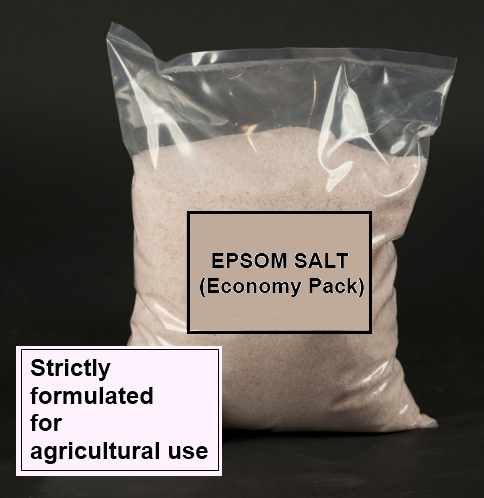
As quality management has become more important in the tourist sector, the implementation of standardised quality management systems has become more common in this industry. The study concludes that the standardisation of quality management in tourism will increase in coming years. Although ISO 9000 and ISO share some common principles and structure, they have different scopes and objectives.
The framework was founded on the concept of Plan-Do-Check-Act (PDCA). ISO standard has many benefits, the reason why companies should consider adopting it as one of their strategic approaches to improving their environmental performance. ISO is similar to ISO 9000 quality management in that both pertain to the process of how a service/product is rendered, rather than to the service/product itself. As with ISO 9001, certification is performed by third-party organizations rather than being awarded by ISO directly. The ISO and ISO audit standards apply when audits are being performed.
DarkPulse, Inc. Signs LOI to Acquire OM Optel, a Fiber Optic Cable … – PR Newswire
DarkPulse, Inc. Signs LOI to Acquire OM Optel, a Fiber Optic Cable ….
Posted: Wed, 13 Jul 2022 07:00:00 GMT [source]
The purpose of ISO is to facilitate international trade and cooperation in commercial, intellectual, scientific and economic endeavors by developing international standards. ISO originally focused on industrial and mechanical engineering standards. Now, it has ventured into setting standards for an organization’s processes, policies, and practices. Purpose – This paper dissects the diffusion of Integrated Management Systems (IMSs) encompassing the ISO 9001, ISO and OHSMS standards in the South European countries.
ISO (9000& 14000 Series)
ISO 9000 is primarily concerned with quality management, which means ensuring that the products and services meet the customer and regulatory requirements, and enhancing the performance and efficiency of the organization. ISO is mainly concerned with environmental management, which means minimizing the negative impacts of the organization’s activities on the environment, and complying with the relevant laws and regulations. ISO 9000 and ISO can be integrated and implemented together, but they are not interchangeable or equivalent. Regarded as one of the most effective tools to guide quality systems management, ISO 9001 is a valuable certification. Yet, the growth observed throughout the world by this standard provides a strong polarisation of interest in this practice by the companies. Our research goals are to analyze and forecast trends involving ISO 9001 certification of six countries, China, Italy, Germany, Japan, the United Kingdom, and India.
ISO 45001: Emerging Standards in Safety Training – Occupational Health and Safety
ISO 45001: Emerging Standards in Safety Training.
Posted: Sun, 07 Feb 2021 08:00:00 GMT [source]
This is the first worldwide published and accepted Environmental management system. ISO 9000 deals with the fundamental quality management system, which includes eight management principles. ISO 9000 was established by International Organization for Standardization that formed an effective quality assurance system. They keep the system of production, manufacturing, and customer needs in proper health.
Will Smithers share my data?
Each of these manuals is updated regularly and sector-specific versions are available for industries with particular challenges. This lesson centers on the International Organization for Standardization (ISO), quality assurance and the quality manuals by which organizations have to abide to be ISO-certified in their particular industries. Proper documentation and implementation of proper procedures are also seen.

Our forecasting of the uptake of the ISO 9001 standard is significant for the certification bodies to understand market diffusion and trends. Implications include this study providing valuable policy guidelines for decision-makers, and new opportunities for further research for scholars. The ISO series of environmental management standards are intended to assist organizations manage the environmental effect of their business practices. The purpose of the ISO 9000 series is to encourage organizations to institute quality assurance management programs. ISO is a set of standards created to help companies around the world reduce their adverse impact on the environment. It’s a framework for improved and more environmentally-conscious quality management systems by organizations large and small.
Guide: The Differences Between ISO 14001 and ISO 9001
Proper improvement and consistency are attained with the help of ISO 9000. Following the guidelines in ISO does not guarantee that an organization is meeting all of the regulations that may be imposed by the government under whose jurisdiction it operates. A Smithers member company may on occasion transfer your personal information to another Smithers member company, in some cases outside the European Economic Area. Smithers member companies are obligated by agreement amongst themselves to protect such information and comply with applicable privacy laws. Smithers will not pass on your information gained through an engagement without your consent.
There are several benefits to implementing this series in your company. There is also a strong belief that having a documented quality procedure gives a firm a strong advantage over its competitors. For example, it will guide you to build quality into your product or service and avoid costly after-the-fact inspections, warranty costs, and rework. Accreditation with ISO is voluntary, but it’s a mandatory step to demonstrate an organization’s commitment to smart environmental stewardship, reduction of environmental impacts and compliance with the global standards.

Smithers will endeavor to keep your information accurate and up-to-date, retaining it only for as long as required. A company’s adoption of ISO standards does not guarantee that it meets all local environmental regulations. Environmental Protection Agency participated in the development of these international guidelines. ISO is similar to ISO 9000 quality management in that both pertain to the process of how a product is produced, rather than to the product itself. It provides the requirements for an environmental management system (EMS). The core of the ISO standards is contained in ISO 14001, which lays out the guidelines for putting an environmental management system (EMS) in place.
Your Legal Data Protection Rights
Their customers may also pay more for products that are environmentally friendly. More than 400,000 organizations around the world have obtained certification, according to the latest ISO survey. This makes it easier for organizations looking to implement more than one ISO-MSS at once, as certain requirements are shared. It will involve measuring quality in key areas like management responsibility, customer satisfaction, and resource management.
The primary difference between ISO 9000 and ISO is one for maintaining product quality and another one is for an organization so that they aware… The basic principles of ISO are based on the well-known Plan-Do-Check-Act (PDCA) cycle. Find out how to get your organization ready for ISO 9001 certification. Enter the email address you signed up with and we’ll email you a reset link. If you have forgotten your password, please enter your email address below and click “Reset Password”.
An EMS is a systemic approach to handling environmental performance issues within an organization. The management system standard uses the plan-do-check-act (PDCA) continuous improvement model. PDCA is a four-step lifecycle assessment aimed at bringing about system and process improvement and change.

Firstly, it can be implemented by improving compliance with the environmental laws within the organization. The managers of companies that have implemented ISO can and will argue forever about the costs versus the benefits. ISO has created a number of manuals for the implementation of sound business practices that are acceptable globally.
ISO 9000 and ISO are two management systems controlling different sectors in the process of production. ISO 9000 covers the quality management sector, while ISO covers the environmental management sector. ISO 14001, like other ISO standards, is voluntary,[12] with its main difference between iso 9000 and iso 14000 aim to assist companies in continually improving their environmental performance and complying with any applicable legislation. The standard can be applied to a variety of levels in the business, from the organizational level down to the product and service level.
- Both standards are developed and updated by the International Organization for Standardization (ISO).
- The purpose is to help companies manage processes efficiently while minimizing environmental effects.
- It can be used by any organization that wants to improve resource efficiency, reduce waste, and reduce costs.
- Practical implications – The obtained results provide a cross-section of the diffusion of IMSs certifications in the South European countries and enable a forecast for the trend in the next years.
Design/methodology/approach – Data concerning the evolution of the amount of IMSs in Greece, Italy, Portugal and Spain were collected for the time period between 1999 and 2015. The behaviour of the evolution of the number of IMSs over the years was studied adopting both the Gompertz and the Logistic models. The results obtained with these two models were compared and analysed in order to provide a forecast for the next years.
